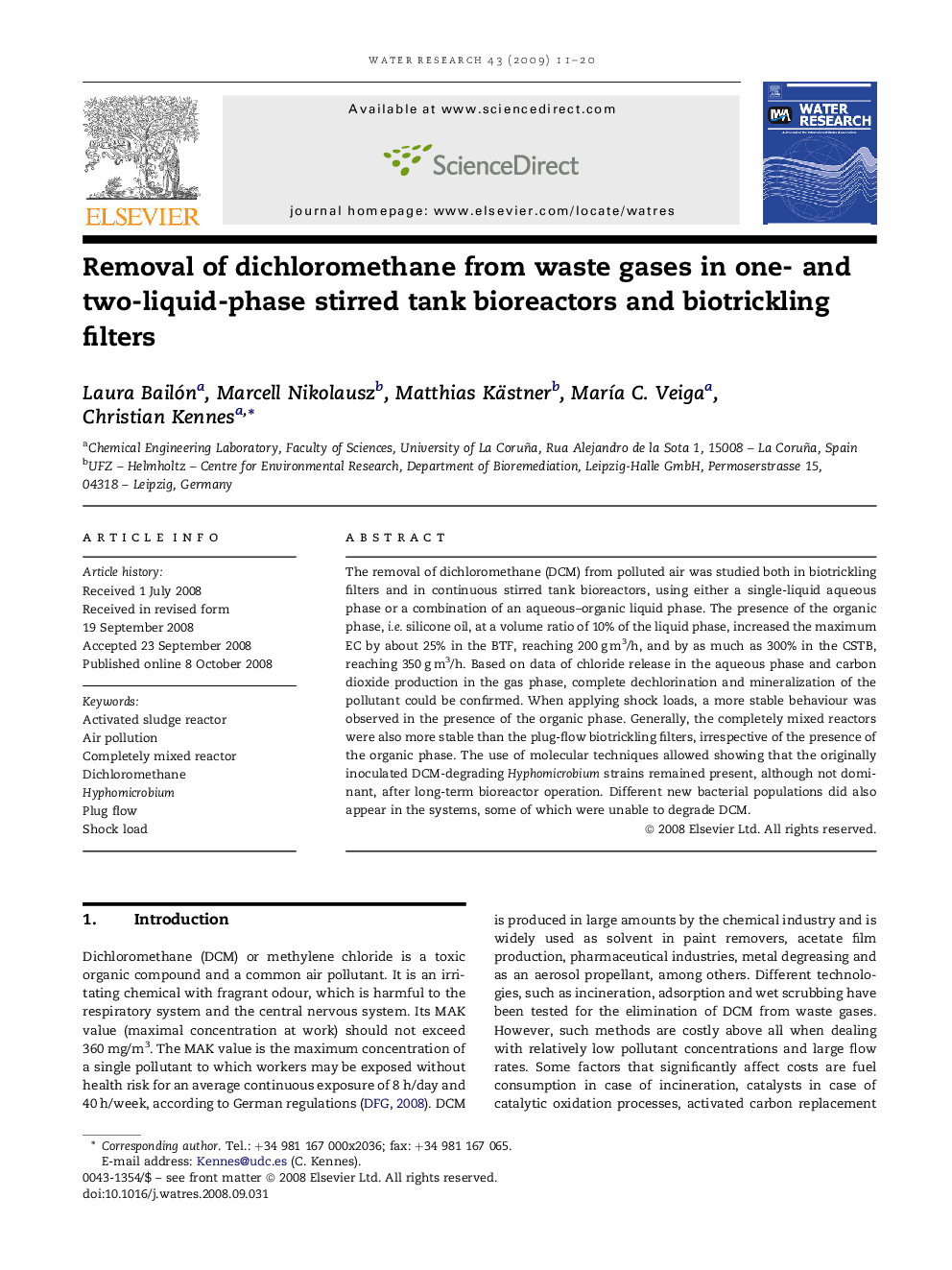| Article ID | Journal | Published Year | Pages | File Type |
|---|---|---|---|---|
| 4483263 | Water Research | 2009 | 10 Pages |
The removal of dichloromethane (DCM) from polluted air was studied both in biotrickling filters and in continuous stirred tank bioreactors, using either a single-liquid aqueous phase or a combination of an aqueous–organic liquid phase. The presence of the organic phase, i.e. silicone oil, at a volume ratio of 10% of the liquid phase, increased the maximum EC by about 25% in the BTF, reaching 200 g m3/h, and by as much as 300% in the CSTB, reaching 350 g m3/h. Based on data of chloride release in the aqueous phase and carbon dioxide production in the gas phase, complete dechlorination and mineralization of the pollutant could be confirmed. When applying shock loads, a more stable behaviour was observed in the presence of the organic phase. Generally, the completely mixed reactors were also more stable than the plug-flow biotrickling filters, irrespective of the presence of the organic phase. The use of molecular techniques allowed showing that the originally inoculated DCM-degrading Hyphomicrobium strains remained present, although not dominant, after long-term bioreactor operation. Different new bacterial populations did also appear in the systems, some of which were unable to degrade DCM.
